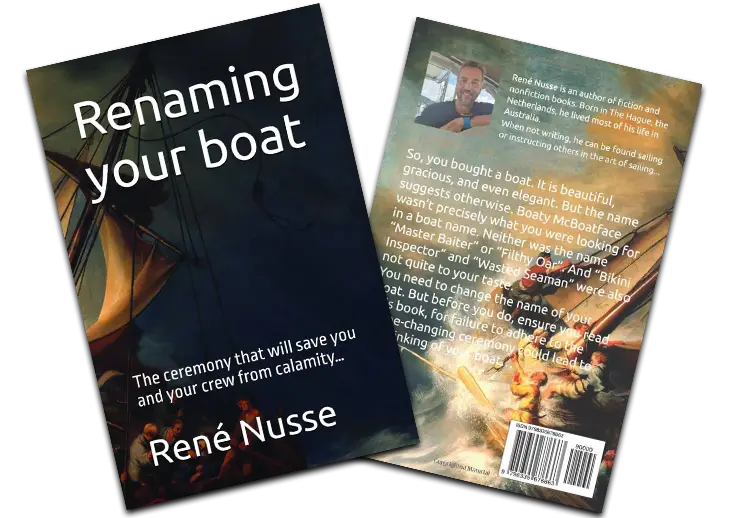Creating lateral distance and leverage in competitive sailing
Okay, so you need to know about lateral distance and how this relates to creating leverage. Well, here we go… First of all, let’s put this in perspective. Creating lateral distance is a wind shift tactic used in competitive sailing. It is neither a good nor a bad tactic, but it goes against the convention of conservative racing as the gain OR risks can be substantial. Creating lateral distance is a bit of a gamble (but sometimes you have nothing to lose, right). So, let’s look at some of the terms used before we get into the details. By lateral distance, we simply refer to the distance between boats relevant to the perpendicular direction of the wind. The diagram below shows a typical scenario where the fleet is sailing to the windward mark. There is no lateral distance between the yellow and blue boats, but the green boat established a substantial lateral distance in relation to yellow and blue.
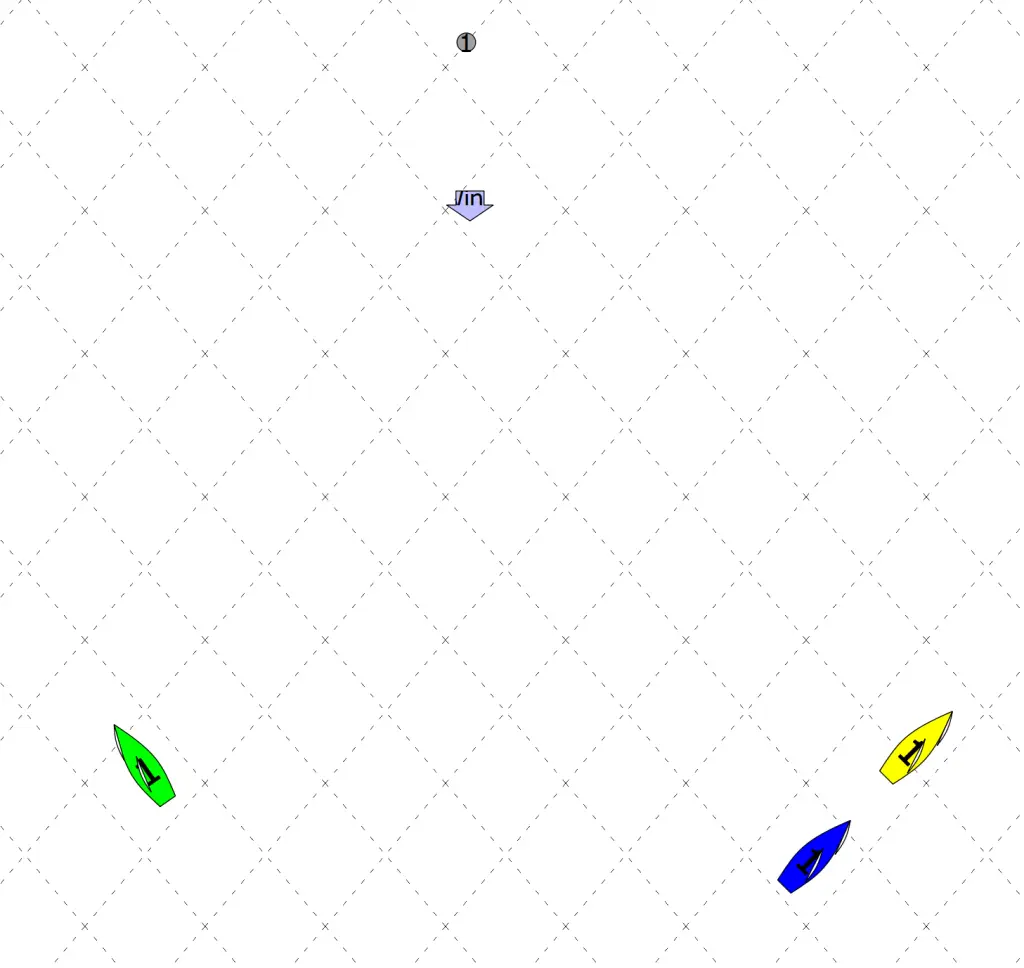
Even if you are unfamiliar with the term lateral distance, I bet you have created lateral distance intuitively to catch up with the leader in the fleet. You may have picked a different route to the leader with the idea that “we have to do something to catch up”. So, you have already created lateral distance, even if you didn’t know it. Whilst creating lateral distance you may not have known that you also created leverage.
- We endeavour to reduce lateral distance relative to the boat behind us when in front.
- Conversely, we endeavour to increase the lateral distance to the boat in front of us when we are behind.
Why? We want to create leverage. So, what is leverage?

Leverage is simply a potential loss or gain you can achieve about other competitors in the fleet. Generally, the larger the lateral distance is, the more significant the possible risk or reward. To change this potential risk or reward into a loss or gain, we need a wind shift. Please look at the diagram below, which shows that lateral distance can create leverage. In the below scenario, a 10-degree wind shift to the left produced a reward for the yellow boat. At point 1, the yellow and blue boats are equal on the ladder. However, after the wind shift, yellow is clearly in front looking at the ladder rung (more on ladder rungs later).
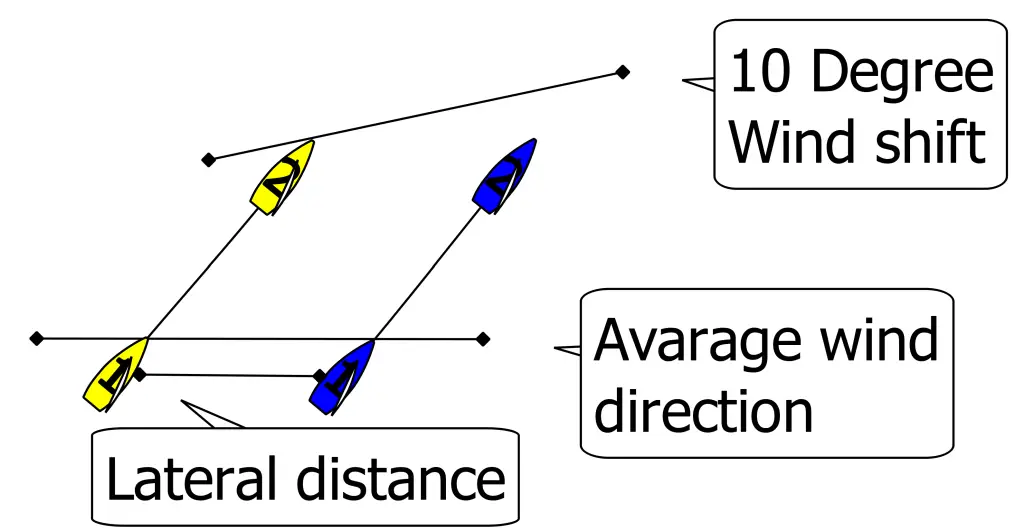
As per the diagram, the lateral distance between yellow and blue is only a couple of boat lengths, but the yellow boat gains an advantage. Two variables may potentially increase this advantage.
- The actual lateral distance. The larger the distance, the bigger the gain or loss.
- The size of the wind shift angle. Ie, the larger the shift, the larger the gain or loss.
To illustrate the point, let’s look at a larger course. At point 1, yellow is well behind blue (say, 25 boat lengths based on the first ladder rung). As this is the last windward leg of the race before the run down to the finish line, yellow decided to put it all on the line by attempting to create leverage. Sure enough, further up the course, we have a sudden 20-degree wind shift to the left. Although the two boats travelled roughly the same distance, the new ladder rung clearly shows yellow ahead of blue. The gamble paid off! Yellow finds itself on a lifted tack, whereas blue is on a headed tack.
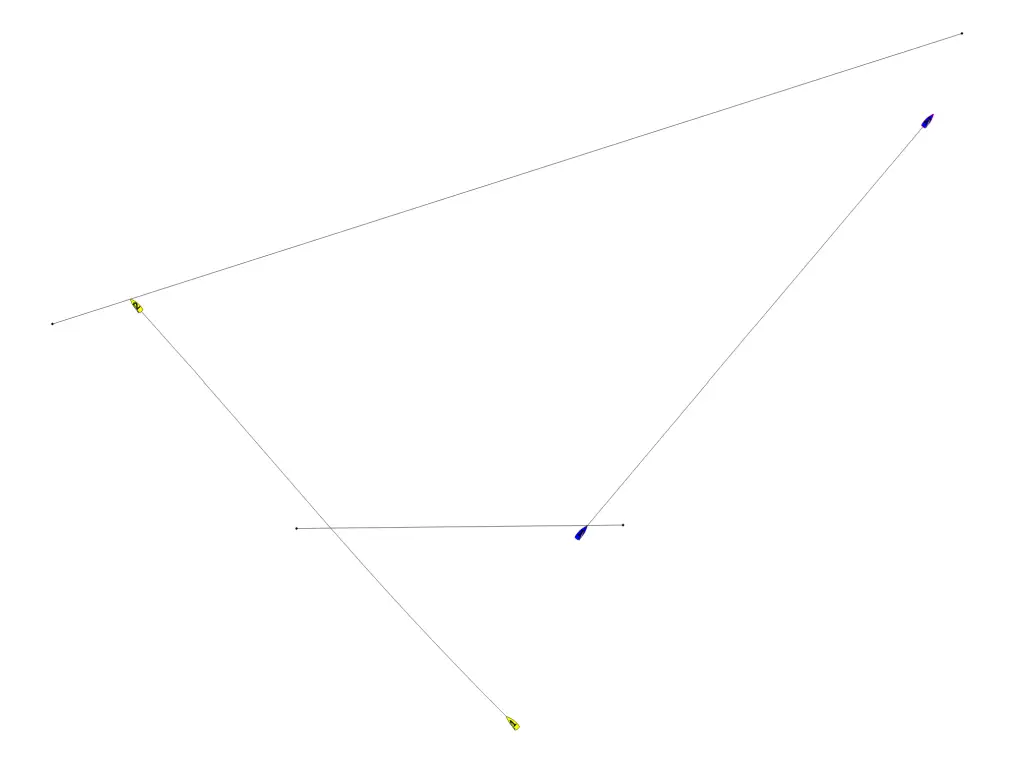
So, as we saw in the above diagram, leverage can lead to a reward. However, imagine the shift was to the right. Yellow would have been even further behind. This is why counting on a reward using leverage is against a conservative approach to racing. You may win the race, but will the leverage strategy win you the regatta? Most likely not. Having first and second place as well as last and second last will likely not be enough to beat your competitor that came in consistently in the top 5. So what about lifted tacks and headed tacks? Where do they come in I hear you ask… Being on a lift tack means your upwind progress is better than the average wind direction. Although not technically the same, let’s assume the average wind direction aligns with the run line. If the wind shifts to the right, then those on a starboard tack are on a lifted tack. Conversely, if the wind shifts to the left, those on a port tack find themselves on a lifted tack. These boats are able to sail higher which means they will reach the mark sooner. Naturally, the opposite is true of headed tacks. These boats are sailing more lateral to the mark and, therefore, will take longer to get there. Let’s look at the next diagram to see how that plays out…

As we can see, in the scenario on the right, 2 boats are on opposite tacks, but because the wind is the predicted average wind, neither boat is on a lifted tack or headed tack. Could you compare this with the boats in the centre? There is a wind shift to the right; therefore, red can sail much higher than green and is, thus, on a lifted tack. Conversely, the change to the left between blue and pink allows blue (although perhaps temporarily) to sail much higher than the pink boat. Here, we see blue on a lifted tack and pink on a headed tack. So, in short, a lift will allow you to sail higher into the wind and, therefore, shorten the distance between your boat and the mark. Whereas a header, or, as we call it, “a knock”, will force us to bear off and thus increase the distance between the boat and the mark. So what about ladder rungs??? (Ladder) rungs are a simple concept that lets you visualise your upwind progress by overlaying a “ladder” perpendicular to the course’s true wind. It gives you an idea of where you are within the fleet.
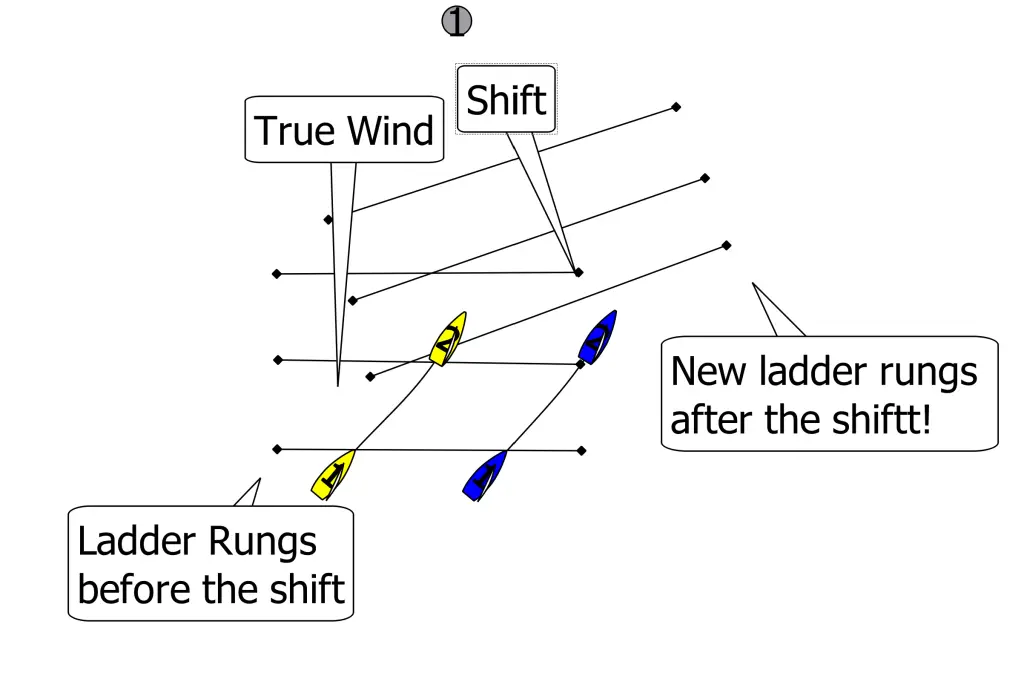
To conclude the subject of lateral distance and leverage, I suggest looking at one more element that plays a role in your decision to create lateral distance in the first place. As discussed above, when you are in front, you like to reduce the risk of another boat moving away to the other side of the course and, by simple luck, win the race. In this situation, you, as the leader, may want to stick closer and reduce lateral distance where possible. But this could mean that you need to enter into different outer zones where sailing becomes riskier because there is less opportunity to utilize leverage. The most conservative line to take is staying on the run line, often coming down from the top mark directly to the start line (but clearly not always). However, this is directly upwind, so we need to tack constantly, and as we know, tacking reduces speed. So we can stick to the run line but not sacrifice too much time for our tacking. For example, have a look at the blue boat. It has taken a conservative route. Being close to the run line means taking maximum advantage of leverage. Could you compare this to the yellow boat, which decided to go directly to the lay line and follow this towards the mark? After point 3, yellow is in no position to take advantage of a wind shift to the left whereas blue can.
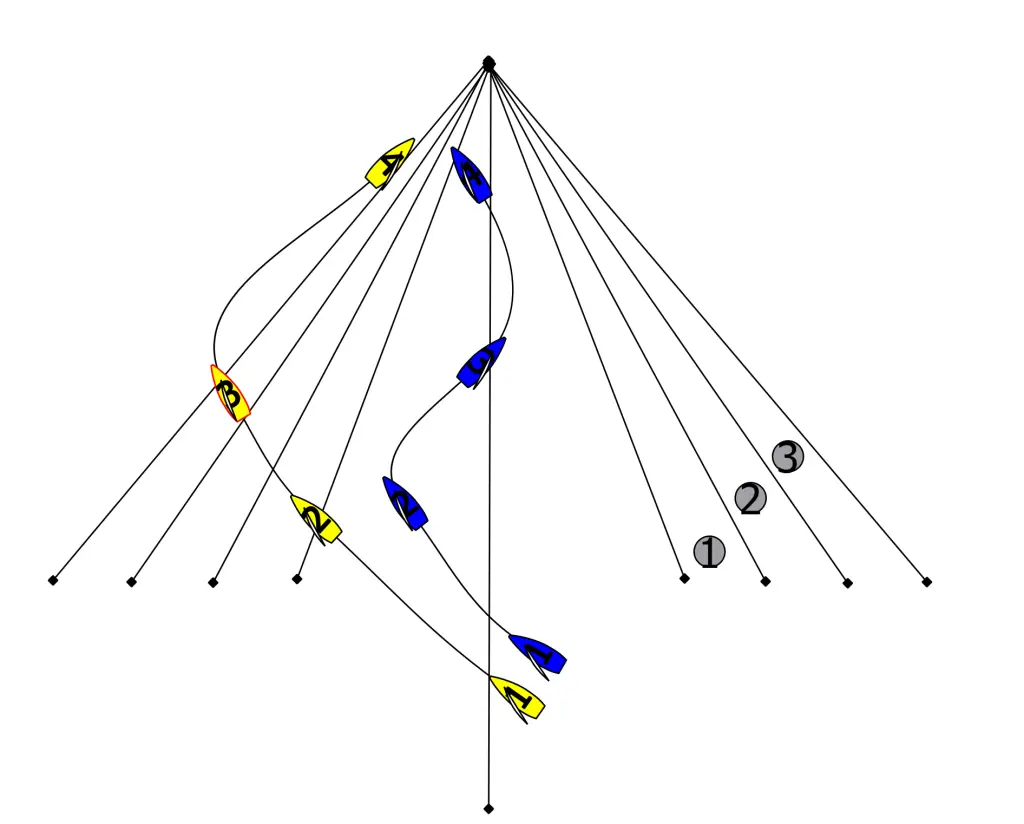
The zones in the context of leverage are relevant because the further out you go, the fewer opportunities there are to take advantage of wind shifts. Blue is in a good position to act on small lifts and headers. Yellow is also in a good position at 2 as it also can act on smaller lifts and headers. In zone 2, yellow wants to tack back towards the run line unless it is on a good lifted tack. When yellow reaches zone 3, it should tack irrespective of being on a lifted tack. Yellow should make its way back closer to the run line if it wants to take advantage of further shifts and avoid being forced further out by a header.
So that is it in a nutshell. Lateral distance creates leverage that can give a great advantage but also lead to a significant disadvantage. We know that lifted tacks are good and headed tacks are to be avoided. We can utilise zones to advise us when to tack for leverage and visualise this using ladder rungs.
Done…
Related: Puffs – reading the water…
Author
-

Rene is a keelboat instructor and sailing coach in the Mandurah area WA. He is also the author of several books about sailing including "The Book of Maritime Idioms" and "Renaming your boat".
View all posts

